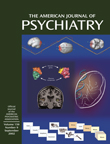Effects of Ketamine on Leading Saccades During Smooth-Pursuit Eye Movements May Implicate Cerebellar Dysfunction in Schizophrenia
Abstract
OBJECTIVE: Ketamine has proved a useful probe in the study of schizophrenia. Recent studies have shown that ketamine causes abnormalities in eye tracking similar to those seen in patients with schizophrenia. The authors examined the effects of ketamine on leading saccadic eye movements, a specific component of the smooth-pursuit response shown to be abnormal in schizophrenia patients and their relatives. METHOD: Twelve normal healthy volunteers received a 0.1 mg/kg bolus injection of ketamine or placebo in double-blind fashion during a smooth-pursuit eye-movement task. The number of leading saccades and the ratios of leading saccades to smooth-pursuit response time and to total saccadic eye-movement time were measured. RESULTS: Ketamine significantly increased the number of leading saccades and increased the leading saccade ratios for more slowly moving targets. Similar nonsignificant effects were noted at higher target speeds. Ketamine-induced abnormalities were similar to those observed in relatives of schizophrenia patients under drug-free conditions. CONCLUSIONS: These results suggest that neurotransmission mediated by N-methyl-d-aspartate (NMDA) is involved in eye-tracking abnormalities. The generation of disruptive leading saccades during smooth pursuit is thought to be mediated by frontal-thalamic-cerebellar circuitry. Evidence that the locus of this and other ketamine-induced smooth-pursuit eye-movement deficits involves NMDA receptor functioning in the cerebellum is suggested.



